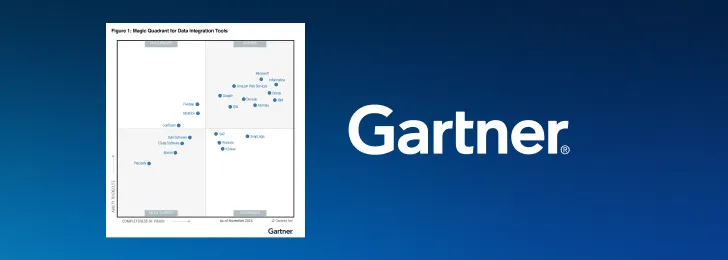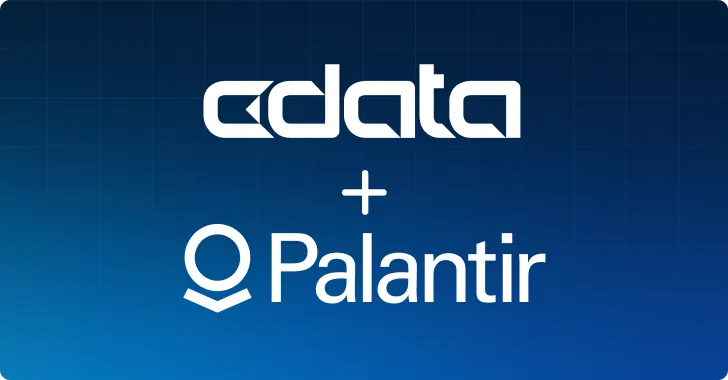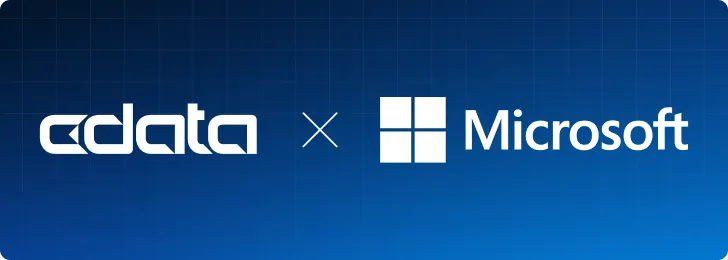
As the world’s data landscape evolves, IT teams are increasingly grappling with a perplexing paradox: How to provide access to critical data while maintaining robust security protocols to protect it. The rapid growth and adoption of cloud technologies further exacerbates the problem, putting a lot of pressure on IT workers. IT is playing an impossible balancing act between shareability and security.
CData recently surveyed more than 550 Operations (Ops) and IT decision-makers at organizations with over 200 employees about the data access challenges they’re facing. The report highlights the implications of these challenges for modern organizations and examines how data connectivity solutions can support secure access to organizational data, providing essential insights for better decision-making.
Get the report
One key takeaway? A major pain point for IT is the struggle to balance data security with easy access. The effort to protect sensitive data competes with the need to share it inside—and outside—the organization. Government regulations, data security laws, and intellectual property policies restrict data access from potential breaches and hacks, but they are also prone to restricting access from those who need that information to make critical business decisions.
IT is stretched thin
According to the report, 43% of respondents said that their organization doesn’t have enough IT resources to ensure that critical data gets to the people who need it. There simply aren’t enough skilled hands and minds to manage the demand. This creates an information bottleneck, leaving decision-makers empty-handed and unable to develop strategies for business growth.
As organizations contend with limited IT resources, another challenge presents itself. Almost half of respondents (46%) say that it’s increasingly difficult to share the data with others specifically due to security controls.
No organization can afford to skimp on security, given the ever-present threat of cyberattacks. However, easy access to data is critical for decision-making, analysis, and driving business strategies. IT leaders frequently find themselves at a crossroads, having to prioritize one over the other. In the pursuit of balance, the scarcity of IT resources can lead to compromises, tilting toward one side of the scale. In the world of data, a compromise in one direction often leads to risk in the other.
The issue becomes even more convoluted by the evolving nature of cyber threats, which demand increasingly sophisticated security measures. The rapidly changing landscape forces them to constantly update and adapt their security strategies. The incessant need for adaptation further stretches the already thin resources, making it even more challenging to provide timely and secure access to data, amplifying the problem.
When data security and accessibility collide
Data is of no use to anyone if it’s locked away where no one can get to it. Governance policies, internal security controls, and regulatory requirements can keep data out of the reach of those who need to use it. Security and governance are necessary, but they’re also viewed as frustrating hurdles. According to the report, 61% of respondents feel that security controls prevent IT employees from effectively providing data to the people who need it. Possibly worse, 47% said that IT has limited access to the operational data itself, further hobbling their ability to provide appropriate access.
Multi-level authentication and rigorous data access protocols to protect PII (personally identifiable information) and other sensitive data can impede time-sensitive marketing campaigns, informed analysis of customer trends, and critical decision-making for healthcare needs. Secure data sharing within an organization is a complex task, especially when under-resourced. IT teams must navigate a minefield of potential risks – from data breaches to unauthorized access – as they try to make data accessible.
This tightrope walk balancing security with accessibility under resource limitations ripples through the entire organization. When secure data sharing is hampered, it can slow down collaborative efforts, impede timely decision-making, and potentially lead to critical data being locked away when needed most. The result? A strained IT department, a slowed workflow, and heightened risks can lead to compromised security.
Each application requires a set of permissions, and each employee has different permissions depending on what they need. Setting up permissions for each application and adding and removing employees is a chore that no one enjoys and often gets pushed to the side when there are higher priorities. To get around this, full access is granted with the assumption that the user knows what they can access and what they can’t. The implications are dangerous and can open a Pandora’s Box of risks from unintentional mishandling.
From locked away to leveraged
There really isn’t a need for the push-pull conundrum of data security vs. data access anymore. Cloud-native data virtualization offers a transformative solution that gives IT departments a simple way to connect and share data directly in the tools where it’s needed. User-based permission settings are set at the data source, taking the complexity out of the equation and providing easy access to those who need data without sacrificing its security.
Data virtualization protects sensitive data because it never leaves the source. It’s not copied, moved, or stored anywhere but where it is generated. Information stays exactly where it should be. SSO (single-sign-on) support and permissions set at the user level ensure that employees can get exactly the data that they need. No more, no less.
With data virtualization, information stays safe, employees have what they need, and IT no longer has to balance one with the other. This equilibrium fosters a more agile and responsive business environment. Insights from timely data enable fast analysis for reporting and business intelligence, spurring innovation and promoting growth.
Find the balance with CData
You don’t have to decide between data access and security. CData provides standards-based connection tools that enable you to protect your data while providing access to those who need it, removing the burden of choice so you can get on with business.
Read the report
Have you joined the CData Community? Ask questions, get answers, and collaborate with people who use CData solutions.
Get the research report
Get insights into the most pressing data access challenges in 2024, and how data connectivity solutions can help.





